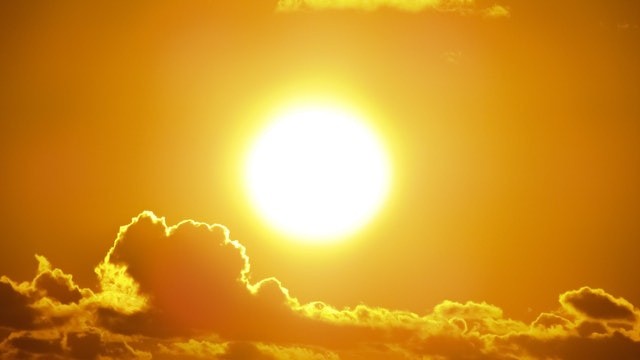Despite the fact that Earth is the bluest planet in our Solar System, no one is aware of where all Earth's water came from.

Asteroid Dust Revealed an Unnoticed Source of Earth's Water
It seems that some of the water on our planet was generated by a river of charged particles blasted from the Sun's upper atmosphere billions of years ago.
When solar wind interrelates with the microscopic dust particles present on certain asteroids, a little quantity of water is produced, which might explain some of the liquid found on Earth.
The bulk of H20 on Earth is thought to have originated from an alien source, likely from C-type asteroids in the Jupiter-Saturn area and beyond, according to most recent models.
These far-off asteroids are assumed to be the parent bodies of carbonaceous chondrite meteorites, which are known to contain a considerable quantity of water-containing minerals and crash onto Earth on a frequent basis, according to Science Alert.
But carbonaceous chondrites aren't the sole reason water got to Earth in the first place. Considering the fact that carbonaceous chondrites cannot account for all of Earth's water supply, it's possible that other water-rich meteorites did the same.
Possible Way to Form Water on Space's Silicate-rich Materials
Other forms of chondrite asteroids might have retained water particles as well, but to a lower amount. The typical chondrite asteroid Itokawa, for example, is a near-Earth asteroid that showed evidence of water in samples collected from this silicate-rich rock in 2010, and the source might very well be the Sun.
Solar wind irradiation has previously been suggested as a method for forming water on silicate-rich objects floating in space.
Volatile hydrogen ions have been proven to combine with silicate minerals in the lab, producing water as a byproduct, while electron microscopy and electron spectroscopy experiments have previously shown direct evidence of H20 inside alien dust particles.
If water gets trapped in these dust particles, it will be protected from space weathering and may later be transferred to other worlds in space through meteorites.

Measurement of Water Abundance
Scientists have analyzed the quantity of water contained inside dust from the Itokawa asteroid, which was returned to Earth in 2011 by the Japanese Aerospace Exploration Agency (JAXA), using a painstaking atom-by-atom examination known as atom probe tomography.
The scientists discovered hydroxide and water richer rims on all sides after measuring everything surrounding these particles, even the regions hidden from the Sun. This indicates that the Sun's hydrogen ions were 'implanted' into the rock, storing water in an inaccessible location.
Scientists expected hydrogen ions penetrating silicate materials to penetrate to the depths at which these life-giving elements were discovered.
According to planetary scientist Phil Bland of Curtin University in Australia, the study implies that the solar wind formed water on the surface of microscopic dust grains and that this isotopically lighter water likely supplied the rest of the Earth's water.
The team predicts that S-type asteroids may retain 20 liters of water for every cubic meter of rock based on how much water they detected in these small dust particles.
The findings suggest that isolated grains of dust in space could be a significant source of water in our Solar System, one that humans could potentially harvest in the future if enough of them are collected.
For more news, updates about Earth's water and similar topics don't forget to follow Nature World News!
© 2025 NatureWorldNews.com All rights reserved. Do not reproduce without permission.





